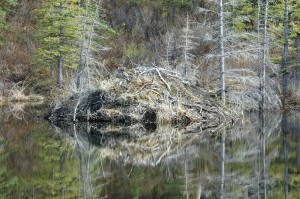The other day I read a scientific report from the ends of the earth. Here, comfortable in earth’s midsection, I pressed myself to imagine the pole to my north. This is a favorite game. When given choice, I walk north by inclination; I am always walking toward winter, spending time when I can on the elevated islands of the farther north that are the White Mountains. In a day, I can make it a good way into Labrador on my favored Franconia Ridge. And when I awaken from the nap I customarily take on Lafayette’s summit, for fleeting seconds, I’m often unsure where I am. Then, as I sit facing north, I think my way in that direction, into the land and sea of always-ice.
For a long time, the compound, “always-ice,” seemed a given to me. There would always be ice. If I walked far enough north, I could always find its extreme. Now, report after report says that this extreme is in jeopardy, that the far latitudes are subject to our creeping middle. More and more, the sea is opening; more and more Greenland is sluicing into it. Imagined ice is melting like an ice tray put mistakenly in the refrigerator rather than the freezer.
The report, a report card on the year 2012 from NOAA (our National Oceanic and Atmospheric Administration) had this to say
The Arctic region continued to break records in 2012—among them the loss of summer sea ice, spring snow cover, and melting of the Greenland ice sheet. This was true even though air temperatures in the Arctic were unremarkable relative to the last decade, according to a new report released today.
“The Arctic is changing in both predictable and unpredictable ways, so we must expect surprises,” said Jane Lubchenco, Ph.D., under secretary of commerce for oceans and atmosphere and NOAA administrator, during a press briefing at the American Geophysical Union annual meeting in San Francisco, Calif. “The Arctic is an extremely sensitive part of the world and with the warming scientists have observed, we see the results with less snow and sea ice, greater ice sheet melt and changing vegetation.”
None of this is news to anyone paying attention to the science of our climate. Activist and author Bill McKibben sounded an alarm more than two decades ago with The End of Nature and he continues his work today. What got me thinking after reading this report, however, was a new clarity about my dependence on extremes. I, like many, live a middling life, one might call it temperate – I get up daily, go to my work as a teacher, where I try to both roil and calm adolescent waters; much of the time I live in a mild world. But I need the example of extremes to be sure I am alive and alert. I need to measure myself in response to them, to consider the questions they ask of me, whether it’s climbing into extreme weather, considering extreme writing, or imagining other lives. Extremes keep complacency from rooting too deeply in me. I depend on that polar world even if I only visit its local islands in the New Hampshire sky.
Shaken by the vanishing of extremes on which I depend, I’m rereading Barry Lopez’s Arctic Dreams (1986) to understand just how important those dreams are. And I’m thinking also about Henry Thoreau who lived in the middle and thought and sometimes acted on the edge.

